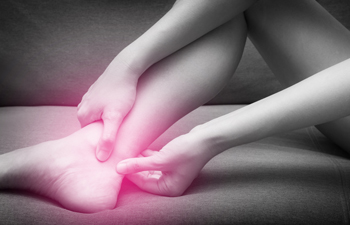
Achilles tendinitis is an overuse injury that affects the tendon connecting the calf muscles to the heel bone. When this tendon becomes irritated, it can cause stiffness, swelling, and pain along the back of the ankle or heel. The discomfort often feels worse in the morning or after physical activity such as running, climbing stairs, or playing sports. This condition can develop from suddenly increasing exercise, wearing unsupportive shoes, or having foot structures that place extra stress on the tendon. Rest and stretching can ease early symptoms, while wearing supportive footwear and targeted exercises may help in ongoing cases. Severe or untreated tendinitis can lead to tears in the tendon, making prompt care important. With the right treatment, most people recover well and return to their normal activities. If you have pain in your heel or Achilles tendon, it is suggested that you see a podiatrist for proper care.
Achilles tendon injuries need immediate attention to avoid future complications. If you have any concerns, contact one of our podiatrists of Foot & Ankle Medical Center . Our practitioners can provide the care you need to keep you pain-free and on your feet.
What Is the Achilles Tendon?
The Achilles tendon is a tendon that connects the lower leg muscles and calf to the heel of the foot. It is the strongest tendon in the human body and is essential for making movement possible. Because this tendon is such an integral part of the body, any injuries to it can create immense difficulties and should immediately be presented to a doctor.
What Are the Symptoms of an Achilles Tendon Injury?
There are various types of injuries that can affect the Achilles tendon. The two most common injuries are Achilles tendinitis and ruptures of the tendon.
Achilles Tendinitis Symptoms
- Inflammation
- Dull to severe pain
- Increased blood flow to the tendon
- Thickening of the tendon
Rupture Symptoms
- Extreme pain and swelling in the foot
- Total immobility
Treatment and Prevention
Achilles tendon injuries are diagnosed by a thorough physical evaluation, which can include an MRI. Treatment involves rest, physical therapy, and in some cases, surgery. However, various preventative measures can be taken to avoid these injuries, such as:
- Thorough stretching of the tendon before and after exercise
- Strengthening exercises like calf raises, squats, leg curls, leg extensions, leg raises, lunges, and leg presses
If you have any questions please feel free to contact our offices located in Nampa and Fruitland, ID . We offer the newest diagnostic tools and technology to treat your foot and ankle needs.
